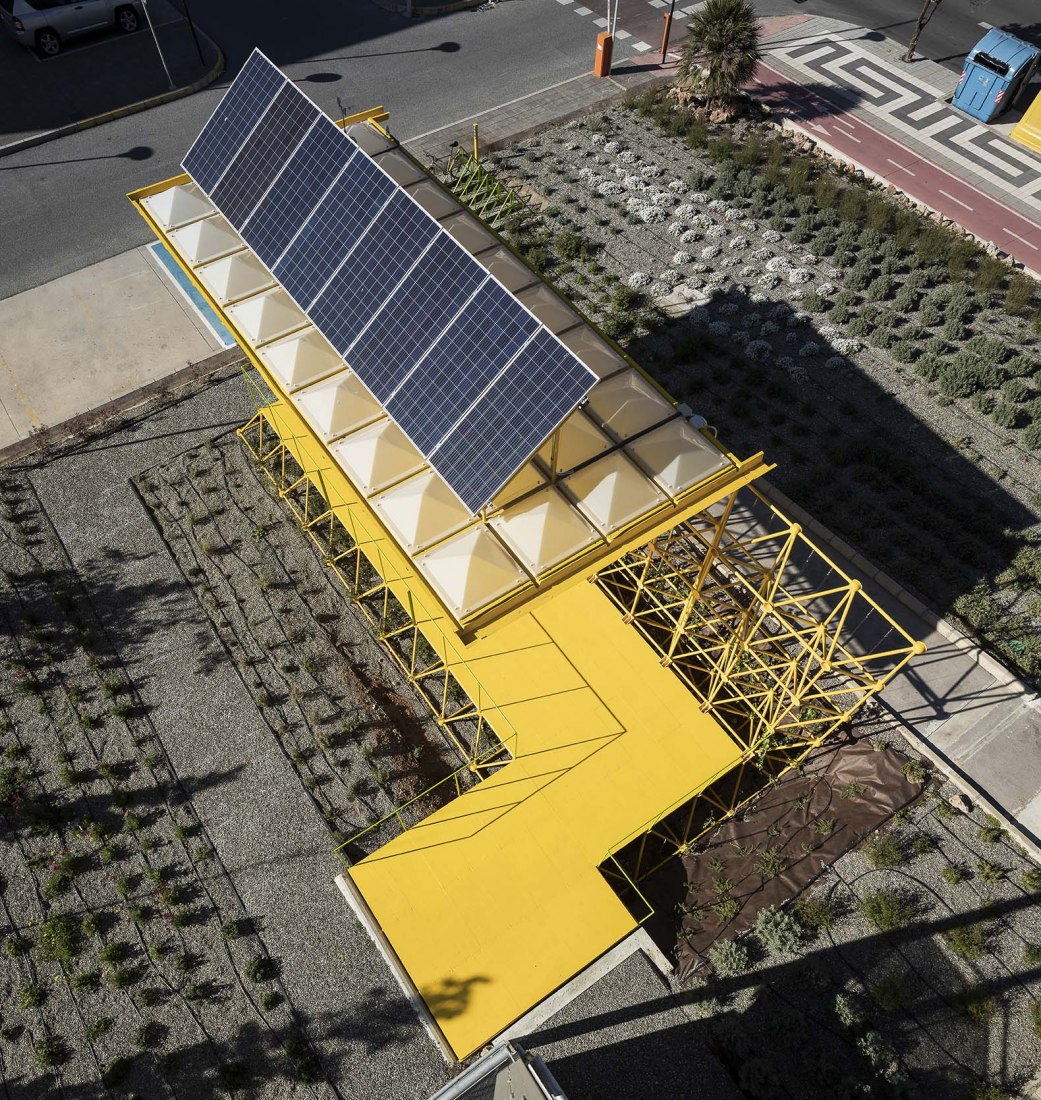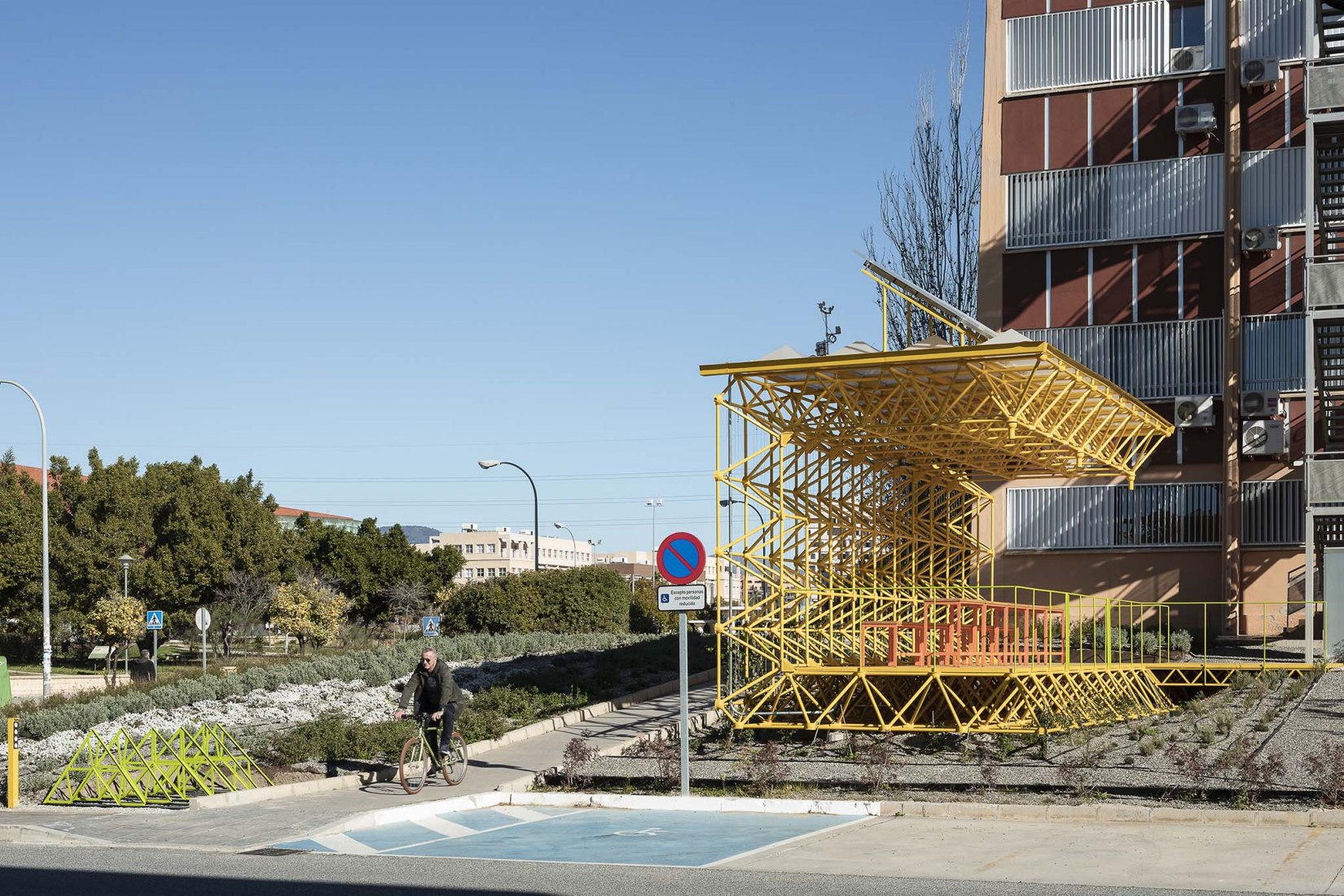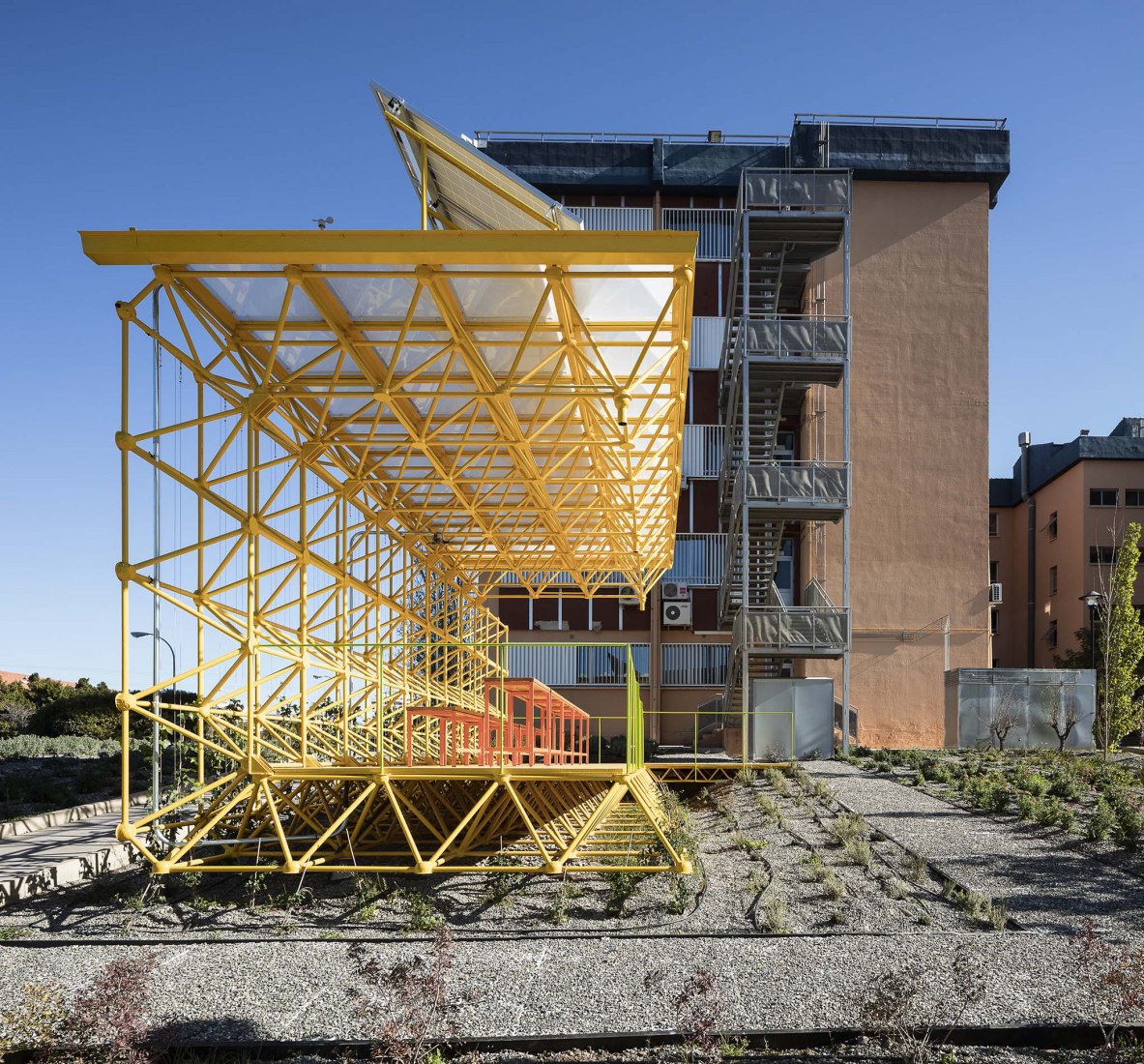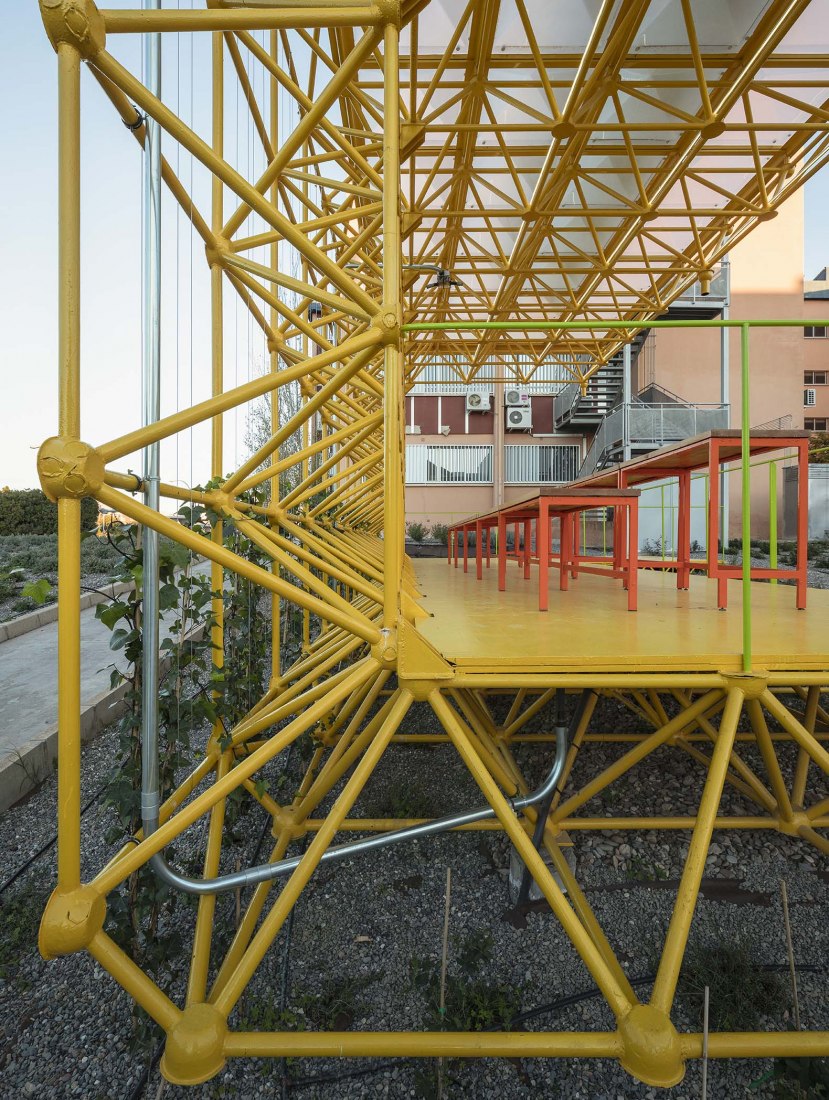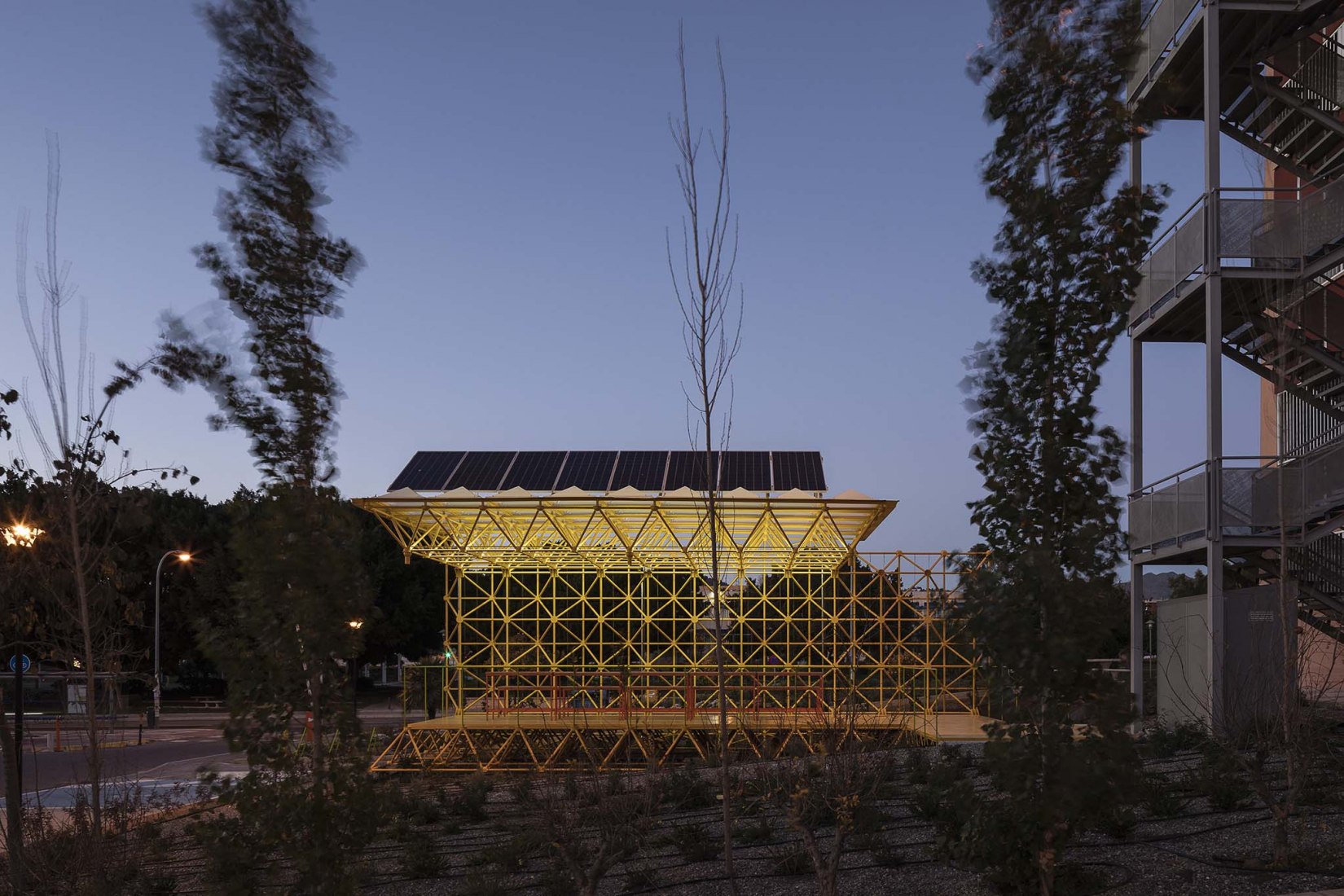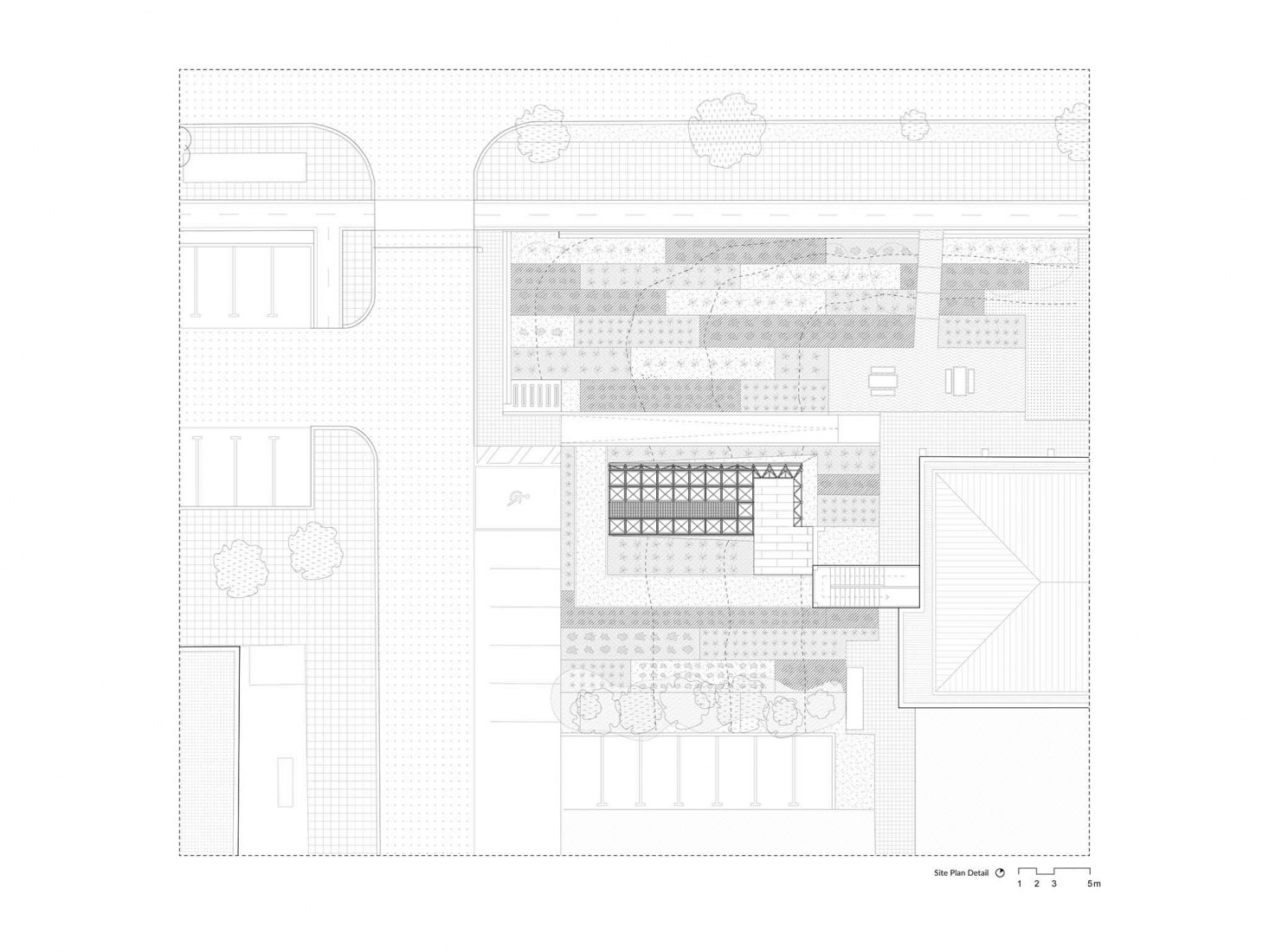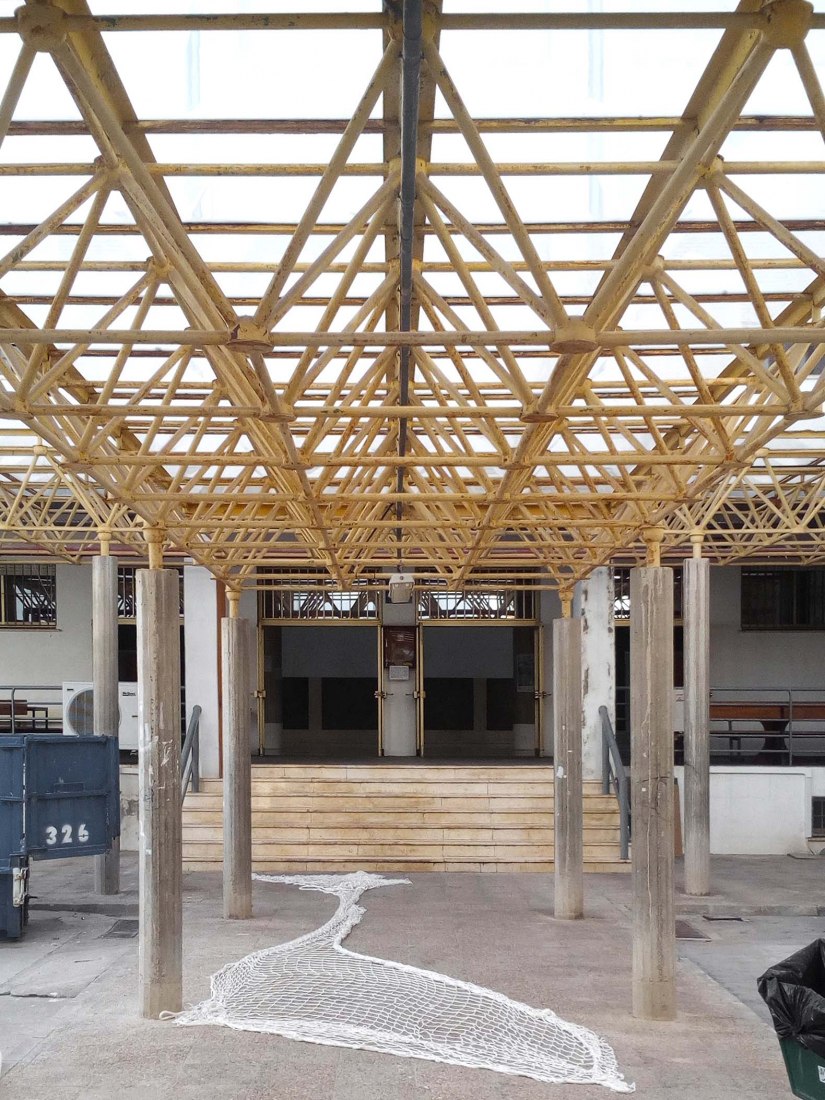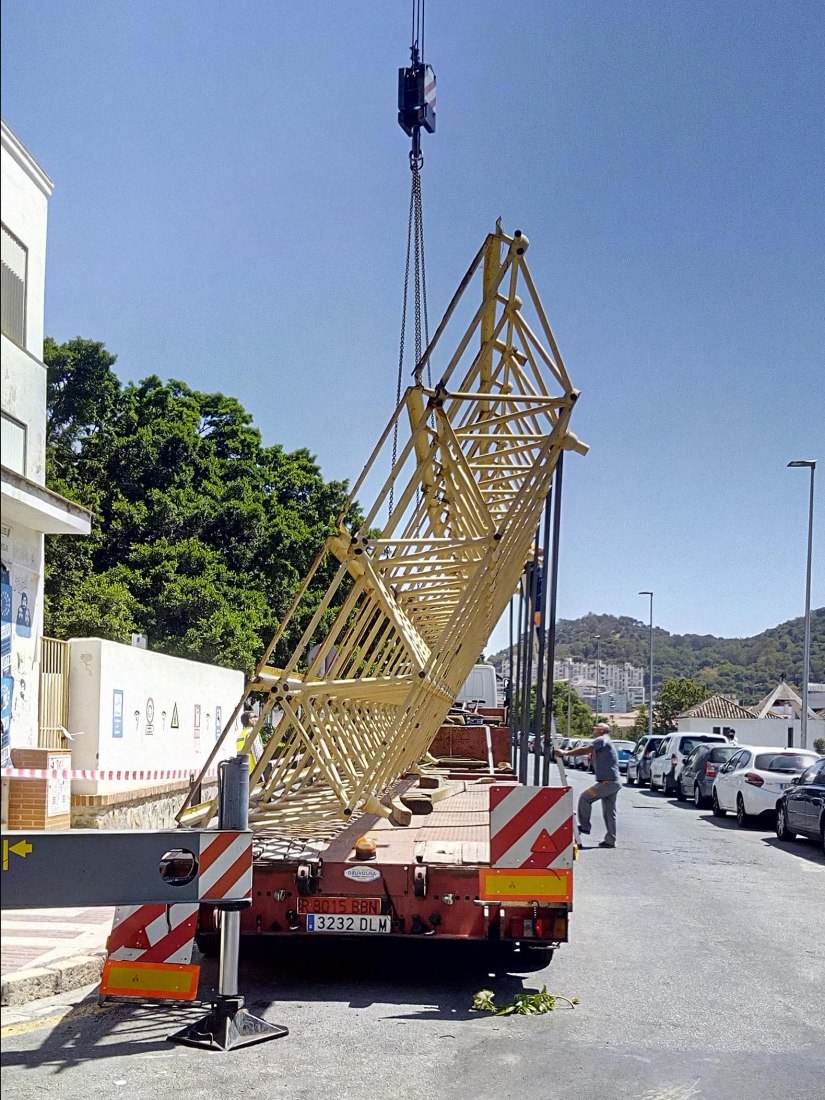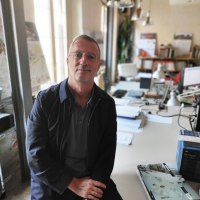These three structures make up an open pavilion design also equipped with technology that allows the collection of data regarding environmental quality or meteorological conditions, among others. But without a doubt, its best utility comes after the pandemic, taking advantage of its structure that is totally open to the outside world.
Description of project by Aq8 Arquitectura and Marinauno Arquitectos
SMART TREE. REUSING UMA´S WASTE.
Smart Tree was born from a research project of the University of Malaga with the objective of recycling elements from the demolition of campus buildings to improve teaching environments college.
As is the case of many of the new spaces in our cities created in the eighties of the last century, The Teatinos University Campus suffers the consequences of a design in which the car had an excessive prominence. With the intention of reactivating this environment and establishing the necessary spaces for relationships for the development of outdoor activities for users of the campus, The University of Malaga has implemented different projects of nature, among them is Smart Tree.
Smart Tree is conceived as a biotechnological tree whose mission is to rehabilitate the outdoor spaces of the university, promoting its use through the creation of green environments and connective services. Located at back of Sciences School, this intervention transforms a disused place to provide users with different buildings in the environment of an open-air co-working space, relaxed and friendly, which provides a microclimate of environmental and sensory comfort, and technology for access to renewable energy and information.
Unexpectedly and due to the restrictions that the pandemic has imposed, Smart Tree has become a makeshift outdoor classroom.
For the development of the prototype, a multidisciplinary team composed of biologists, engineers and architects, with the idea of working on the various lines of the project.
The structure of Smart tree and its furniture have been designed from materials from demolitions parts of campus buildings that have exhausted their first useful life. The pavilion arises from the reworking of astructure that served as a pergola in the courtyard of Fine Arts School, whose necessary rehabilitation implied the elimination of it. From this work, three triangulated spatial structures were obtained that were used to compose the pavilion without the need for excessive transformation; and the concrete columns, which stuck in the land served to carry out the strict projected foundations.
Without the need to add new elements to generate the pavilion, the first of the structures was used to build the floor plane, the second to generate the vertical support, and the third and last,to cover the pavilion. Of the power of these structures and the absence of other structural elements to recycle arose the cantilever that means this "folie", which painted yellow floats over the garden without hardly touching it. Some tubular iron benches and beech wood boards from the demolition of the laboratories of the Sciences School served to furnish the pavilion and delimit the crops.
All this was built on a garden, which with the intention of improving the environmental and sensory conditions, was designed using native flora. A weather station and various strategically located sensors enable the collection of data in real time of the environmental quality conditions, through which conclusions are drawn for the improvement of this space and its future application in other rehabilitation projects of outdoor spaces. The autonomous energy capture system installed in the Smart Tree allows the inclusion of control systems, the lighting of the pavilion itself and the creation of a charging point for electric bicycles.



